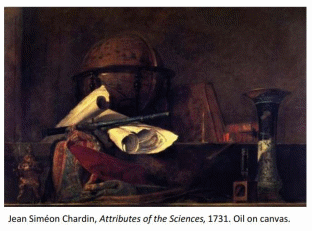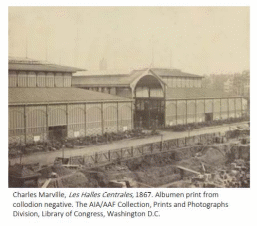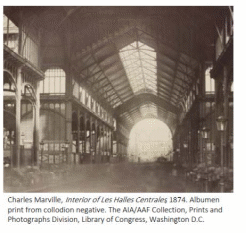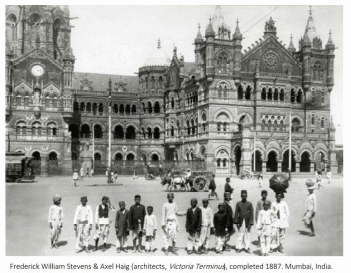The 19th century was a turbulent period in terms of the rapid technologic development that was marked by such prominent innovations as the camera, electric light, the typewriter, and other inventions. The key two innovations that transformed the lives of people were electricity and steam engines. They impacted artworks by giving an impetus to the extensive development of print works and photography. The artists of that period actively participated in technological progress by adopting new forms of art to reflect the changing environment.
The end of the 18th century was marked by a transition from Rococo with its romantic trends to realism that reflected people’s achievements and the surrounding reality. Driven by industrialization processes, the living standard of the population and life span increased, which also affected culture and social relationships. Jean Siméon Chardin’s “Attributes of the Sciences” that is painted by oil on canvas can be considered a prelude to the changes. There are a telescope, world map, microscope, and books, which serve as the symbols of innovations. To create this masterpiece, the artist had to accurately imagine the whole picture before starting, and it took several days to complete it. Even though the artists depicted real-life objects and people as well, their works included some subjectivity.
With the invention of albumen print by Louis Désiré Blanquart-Evrard, it became one of the dominant ways to capture the environment. “Les Halles Centrales, 1867” by Charles Marville represents the heyday of machine-based productivity and aims to document Paris as it underwent critical renovation. In this case, the artist acts as a journalist who makes historical records. Compared to oil painting, albumen printing allowed for making the process of the artwork creation more rapid and detailed, which was especially important for paying attention to the architecture. “Interior of the Les Halles Centralles” is another work by Marville, which shows the newly built central food market. It presents the new elements that were extensively used in the 19th century, such as glass and iron, shaping aerial corridors and suspended terraces.
Since ancient Greece, mimesis was the main principle of shaping in the visual arts, which is the imitation of nature. Copying nature was an obligation of the painter, but it was also his or her privilege. The invention of the camera, the machine that could squeeze a person in mimesis, first, did not threaten painting since no one took photography as a form of art. However, the more widespread the photos became, the more the way the vision of reality changed. For example, a photo by Victoria Terminus presents Chhatrapati Shivaji Terminus in Mumbai, India, which was built by engineer Frederick William Stevens and architect Alex Haig. This photography vividly reflects political, social, and cultural issues that were associated with increased transportation and the use of electricity and engines. The features of self-presentation, the ability to work with visual information, and the degree of trust in printed materials increased. Photography turned out to be more than just a machine-based process as it became a symbol of consciousness and critical thinking, through which people act and interact with others.
To conclude, electricity, steam engines, and photography were the main technologic innovations of the 19th century. The artists of that period tried to capture the events around them to save the changes and compare them with the past traditions and practices. The greatest transition occurred in the art forms that were used by the artists, from oil painting to albumen printing and photography. The images that depict these changes help to better understand their role in the art of the 19th century.
Appendices



